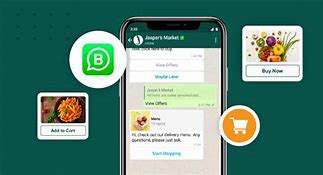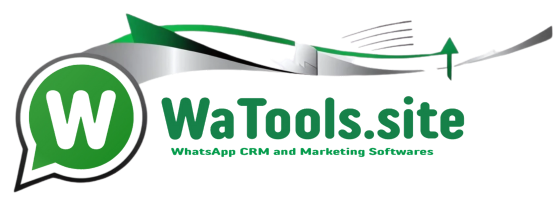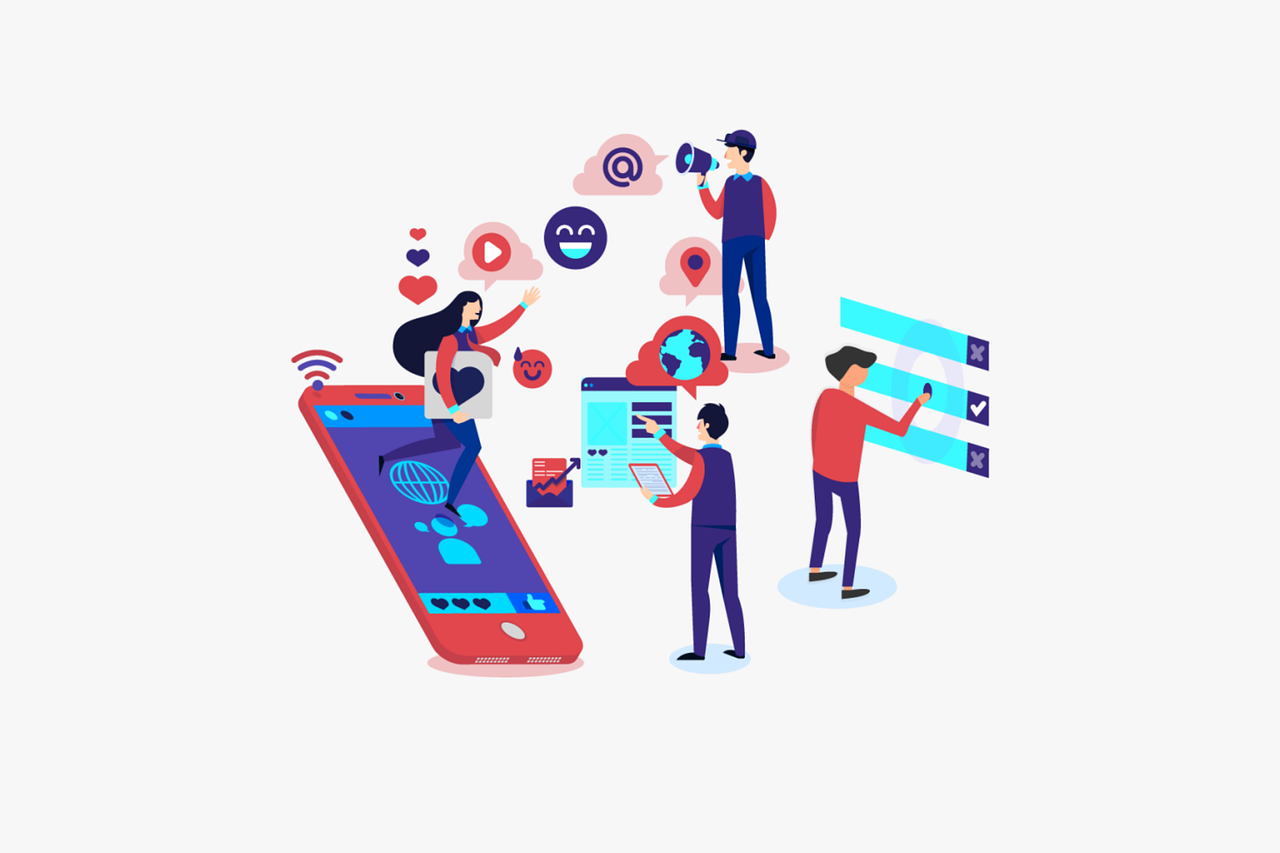For small businesses with limited resources, providing consistent customer service, managing inquiries, and nurturing leads can be overwhelming. This is where WhatsApp automation comes in—transforming how small businesses communicate with customers while saving time, reducing costs, and improving overall efficiency.
With over 2 billion active users worldwide, WhatsApp has become an essential communication channel for businesses of all sizes. The platform's Business API and growing ecosystem of automation tools offer small businesses powerful capabilities that were once available only to large enterprises with substantial budgets.
In this comprehensive guide, we'll explore how small businesses can leverage WhatsApp automation to streamline operations, enhance customer experiences, and drive growth—all without requiring technical expertise or significant financial investment.
Understanding WhatsApp Automation: The Basics
WhatsApp automation refers to the use of technology to handle routine WhatsApp communications and tasks without manual intervention. This can range from simple automated responses to sophisticated conversational flows powered by artificial intelligence.
Key Components of WhatsApp Automation
- Automated Responses: Pre-written messages sent automatically based on specific triggers
- Chatbots: AI-powered virtual assistants that can handle conversations and perform tasks
- Message Templates: Pre-approved message formats for business-initiated communications
- Workflow Automation: Sequences of actions triggered by specific events or conditions
- Integration Capabilities: Connections with other business systems like CRM, e-commerce platforms, or calendars
WhatsApp Business App vs. WhatsApp Business API
Small businesses have two main options for implementing WhatsApp automation:
| Feature | WhatsApp Business App | WhatsApp Business API |
|---|---|---|
| Cost | Free | Pay-as-you-go messaging fees |
| Setup Complexity | Simple (download and register) | Moderate (requires API solution provider) |
| Automation Capabilities | Basic (greeting messages, away messages, quick replies) | Advanced (chatbots, complex workflows, integrations) |
| Multi-user Access | Limited (one device only) | Unlimited team members |
| Message Volume | Limited by manual capacity | Scalable to thousands of conversations |
| Best For | Solopreneurs, micro-businesses with low message volume | Growing small businesses with moderate to high message volume |
While the WhatsApp Business App offers some basic automation features, businesses looking for more sophisticated automation capabilities will need to use the WhatsApp Business API through a solution provider like WATools.
10 Powerful WhatsApp Automation Strategies for Small Businesses
Let's explore the most effective ways small businesses can implement WhatsApp automation to save time, improve customer experiences, and drive growth.
1. Automated Welcome Messages
First impressions matter. An automated welcome message ensures every customer receives an immediate, professional greeting when they first contact your business on WhatsApp.
Implementation:
- Create a warm, branded greeting that introduces your business
- Include information about what customers can expect (response times, services available via WhatsApp)
- Offer clear next steps or options for common inquiries
- Consider personalizing the message if customer information is available
Example welcome message:
"👋 Hello and welcome to [Your Business Name]! Thank you for reaching out to us on WhatsApp. We're here to help with any questions about our products/services.
🕒 Our team typically responds within 15 minutes during business hours (9 AM - 6 PM, Monday-Friday).
How can we assist you today? You can type your question or select from these common options:
1️⃣ Product information
2️⃣ Pricing details
3️⃣ Book an appointment
4️⃣ Check order status
Pro Tip
Test different welcome messages to see which generates the best engagement. Track metrics like response rate and conversation continuation to optimize your greeting over time.
2. Customer Service Automation
Automating responses to common customer service inquiries can dramatically reduce response times while freeing up your team to handle more complex issues.
Implementation:
- Identify your most frequently asked questions (FAQs)
- Create a knowledge base of clear, concise answers
- Set up keyword detection to trigger appropriate responses
- Implement a menu-based system for easy navigation
- Include an option to connect with a human agent when needed
Common customer service automations:
- Order status tracking ("Where is my order?")
- Business hours and location information
- Return and exchange policy details
- Product availability inquiries
- Troubleshooting common product issues
3. Appointment Scheduling and Reminders
For service-based small businesses, automating appointment scheduling and reminders can significantly reduce no-shows and streamline calendar management.
Implementation:
- Integrate WhatsApp with your calendar system (Google Calendar, Calendly, etc.)
- Create a booking flow that collects necessary information
- Set up automated appointment confirmations
- Schedule reminder messages (24 hours before, 1 hour before)
- Implement easy rescheduling and cancellation options
Example appointment reminder sequence:
- Immediate confirmation: "Your appointment for [service] has been confirmed for [date] at [time]. We look forward to seeing you!"
- 24-hour reminder: "Reminder: You have an appointment tomorrow at [time] for [service]. Reply CONFIRM to confirm or RESCHEDULE if you need to change your appointment."
- 1-hour reminder: "Your appointment for [service] is coming up in 1 hour. We're looking forward to seeing you soon!"
- Follow-up: "Thank you for visiting us today! We hope you enjoyed your [service]. We'd love to hear your feedback or answer any questions you might have."
Case Study: Local Salon Reduces No-Shows by 78%
A small hair salon implemented WhatsApp appointment automation with a three-step reminder system:
- Booking confirmation with all appointment details
- 24-hour reminder with easy confirmation/rescheduling options
- Same-day reminder 2 hours before the appointment
No-show Rate
-78%
Reduction after implementation
Staff Time Saved
12 hrs/week
Previously spent on phone calls
Customer Satisfaction
+32%
Improvement in feedback scores
Monthly Revenue
+15%
Due to better schedule utilization
4. Lead Generation and Qualification
Automated WhatsApp flows can help small businesses capture, qualify, and nurture leads more efficiently than manual processes.
Implementation:
- Create a structured conversation flow to gather key information
- Ask qualifying questions to determine lead quality and needs
- Use conditional logic to route leads appropriately
- Integrate with your CRM to store lead information
- Set up automated follow-up sequences
Example lead qualification flow:
- Initial inquiry received and welcome message sent
- Bot asks: "To help you better, could you tell us what you're looking for today?" (with menu options)
- Based on selection, bot asks relevant qualifying questions:
- "What's your budget range?"
- "When are you looking to make a purchase/decision?"
- "Have you used similar products/services before?"
- Bot assesses lead quality based on responses
- High-quality leads are immediately connected to sales team
- Medium-quality leads receive educational content and nurturing
- Low-quality leads receive self-service resources
5. Order Processing and Tracking
For small e-commerce businesses, automating the order process through WhatsApp can create a seamless buying experience while reducing support inquiries.
Implementation:
- Integrate WhatsApp with your e-commerce platform
- Create automated order confirmation messages
- Set up shipping and delivery notifications
- Implement order tracking functionality
- Create post-purchase follow-up sequences
Automated order messaging sequence:
- Order confirmation: "Thank you for your order #12345! We've received your payment of $XX.XX for [product names]. We'll notify you when your order ships."
- Shipping notification: "Good news! Your order #12345 has shipped. Track your package here: [tracking link]. Estimated delivery: [date range]."
- Delivery confirmation: "Your order #12345 has been delivered! We hope you love your purchase. If you have any questions, just reply to this message."
- Review request: "We hope you're enjoying your recent purchase! We'd love to hear your thoughts. Would you mind taking a moment to leave a review? [review link]"
Pro Tip
Include product care instructions or usage tips in your post-purchase automation sequence to enhance the customer experience and reduce support inquiries. This proactive approach can significantly decrease "how do I use this?" questions while increasing customer satisfaction.
6. Abandoned Cart Recovery
For e-commerce businesses, abandoned cart recovery via WhatsApp can be significantly more effective than email, with open rates up to 98% compared to email's 20%.
Implementation:
- Integrate WhatsApp with your e-commerce platform
- Set up opt-in during the checkout process
- Create a sequence of recovery messages
- Include direct links back to the cart
- Consider offering incentives in follow-up messages
Example abandoned cart sequence:
- 1 hour after abandonment: "Hi [Name], we noticed you left some items in your cart. Need help completing your purchase or have questions about [product names]?"
- 24 hours after abandonment: "Your items are still waiting for you! Complete your purchase now to ensure availability: [cart link]"
- 48 hours after abandonment: "Last chance! To help you decide, we're offering 10% off your purchase with code SAVE10. Your cart: [cart link]"
7. Feedback Collection and Surveys
Automated feedback collection via WhatsApp can help small businesses gather valuable insights while demonstrating that they value customer opinions.
Implementation:
- Create concise, engaging survey questions
- Use a mix of rating scales and open-ended questions
- Time surveys appropriately (e.g., after purchase, service completion)
- Make participation easy with interactive response options
- Thank customers for their feedback and close the loop
Example feedback sequence:
"Hi [Name], thanks for your recent purchase! We'd love to know about your experience. On a scale of 1-5, how would you rate your overall satisfaction?"
[Customer responds with rating]
If rating is 4-5: "That's great to hear! What did you like most about your experience?"
If rating is 1-3: "We're sorry to hear that. What could we have done better to improve your experience?"
[Customer responds with feedback]
"Thank you for your valuable feedback! We'll use it to improve our service. As a token of our appreciation, here's a 10% discount code for your next purchase: THANKS10"
8. Loyalty Program Management
WhatsApp automation can make loyalty programs more engaging and accessible for small businesses, increasing customer retention and repeat purchases.
Implementation:
- Create a simple enrollment process via WhatsApp
- Set up automated point balance updates
- Send reward notifications when thresholds are reached
- Implement special offers for loyalty members
- Provide easy redemption options through WhatsApp
Example loyalty program messages:
- Enrollment confirmation: "Welcome to our Loyalty Program! You'll earn 1 point for every $10 spent. Reach 50 points for a $15 reward. Your current balance: 10 points from today's purchase."
- Balance update: "Thanks for your purchase! You've earned 5 new points, bringing your total to 25 points. You're halfway to your next reward!"
- Reward notification: "Congratulations! You've reached 50 points and earned a $15 reward! Reply REDEEM to use it on your next purchase or SAVE to keep collecting points."
- Special offer: "Exclusive for loyalty members: This weekend only, earn DOUBLE POINTS on all purchases! Shop now: [link]"
9. Educational Content Delivery
Automated delivery of educational content via WhatsApp can position your small business as an industry authority while nurturing prospects and supporting customers.
Implementation:
- Create valuable, bite-sized content pieces
- Organize content into logical sequences or courses
- Set up timed delivery schedules
- Include rich media (images, short videos, PDFs)
- Add interactive elements to boost engagement
Content delivery ideas:
- Product usage tips and tutorials
- Industry insights and trends
- "Did you know?" facts related to your products/services
- Mini-courses on topics relevant to your audience
- Case studies and success stories
10. Inventory and Availability Alerts
Automated inventory alerts can help small businesses drive sales by notifying interested customers when products become available or when stock is running low.
Implementation:
- Create an opt-in system for product alerts
- Integrate WhatsApp with your inventory management system
- Set up triggers for back-in-stock notifications
- Create low-stock alerts to create urgency
- Include direct purchase links in notifications
Example inventory alert messages:
- Back in stock: "Good news! The [product name] you were interested in is back in stock! Shop now before it sells out again: [product link]"
- Low stock alert: "Just 5 units left of [product name]! Secure yours before they're gone: [product link]"
- Pre-order notification: "The new [product] collection is available for pre-order! Be the first to get it when it arrives on [date]: [pre-order link]"
- Price drop alert: "Price drop alert! [Product name] is now [X]% off. Was: $XX.XX, Now: $XX.XX. Shop now: [product link]"
Implementing WhatsApp Automation: A Step-by-Step Guide for Small Businesses
Now that we've explored the various automation strategies, let's look at how small businesses can implement WhatsApp automation effectively.
Step 1: Define Your Automation Goals
Before implementing any automation, clearly define what you want to achieve:
- Reduce response time to customer inquiries
- Decrease workload for your team
- Increase sales conversions
- Improve customer satisfaction
- Enhance lead generation and qualification
Set specific, measurable goals (e.g., "Reduce response time from 5 hours to 5 minutes" or "Decrease customer service workload by 40%").
Step 2: Choose the Right WhatsApp Business Solution
Based on your business size, message volume, and automation needs, decide between:
- WhatsApp Business App: For very small businesses with basic automation needs
- WhatsApp Business API via a solution provider: For growing businesses needing more advanced automation
If choosing the API route, select a solution provider like WATools that offers:
- User-friendly interface requiring minimal technical knowledge
- Flexible pricing suitable for small business budgets
- Comprehensive automation features
- Good customer support
- Integration capabilities with your existing systems
Step 3: Map Your Customer Communication Journeys
Identify the common conversation paths customers take when interacting with your business:
- What are the typical entry points? (Website inquiry, social media, direct contact)
- What are the most common questions or requests?
- What information do you need to collect from customers?
- What are the desired outcomes of different conversation types?
- Where do conversations typically get stuck or require human intervention?
Create flowcharts for each main customer journey to visualize the conversation paths.
Step 4: Create Your Automation Content
Develop the content for your automated messages:
- Write clear, concise messages that reflect your brand voice
- Create response templates for common questions
- Develop decision trees for conversation flows
- Prepare rich media content (images, videos, PDFs) as needed
- Design menu options for interactive conversations
Pro Tip
When writing automated messages, follow the "3C" rule: Clear, Concise, and Conversational. Avoid jargon, keep messages short enough to read on a mobile screen without scrolling, and use a natural, friendly tone that matches your brand voice.
Step 5: Set Up and Test Your Automation
Implement your automation flows in your chosen WhatsApp Business solution:
- Configure welcome messages and away messages
- Set up automated workflows based on your customer journey maps
- Integrate with other business systems if needed
- Test thoroughly with different scenarios and edge cases
- Have team members and trusted customers provide feedback
Step 6: Train Your Team
Ensure your team understands how the automation works and when to step in:
- Provide training on the automation system
- Clarify when and how to take over conversations from the bot
- Establish protocols for handling complex inquiries
- Create guidelines for maintaining a consistent tone when transitioning from bot to human
- Set up a feedback system for continuous improvement
Step 7: Launch, Monitor, and Optimize
After launching your WhatsApp automation:
- Monitor key metrics (response time, resolution rate, customer satisfaction)
- Identify conversation points where customers get stuck
- Analyze common queries that the automation can't handle
- Collect customer feedback about the automated experience
- Regularly update and refine your automation based on insights

Streamline Your Business with WATools WhatsApp Automation
WATools provides small businesses with powerful, easy-to-use WhatsApp automation solutions that don't require technical expertise. Our platform offers all the features discussed in this guide, from simple auto-replies to sophisticated chatbots and CRM integration, with pricing plans designed specifically for small business budgets.
Start Your Free Trial TodayBest Practices for Small Business WhatsApp Automation
To maximize the effectiveness of your WhatsApp automation while maintaining a personal touch, follow these best practices:
Balance Automation with Human Touch
- Be transparent about when customers are talking to a bot
- Create clear pathways to reach human support when needed
- Program your automation to detect frustration and escalate to humans
- Use personalization to make automated messages feel more human
- Have real team members follow up on complex inquiries
Respect Customer Privacy and Preferences
- Always obtain proper opt-in before sending automated messages
- Provide clear opt-out instructions in your messages
- Be transparent about how customer data will be used
- Respect messaging frequency preferences
- Comply with relevant data protection regulations (GDPR, CCPA, etc.)
Keep Content Fresh and Relevant
- Regularly update your automated responses to reflect current information
- Review and refresh content based on seasonal changes or promotions
- Update FAQs based on emerging customer questions
- Ensure product information and pricing details stay current
- Periodically review all automated sequences for relevance
Continuously Improve Based on Data
- Regularly analyze conversation logs to identify improvement opportunities
- Track key metrics like resolution rate, customer satisfaction, and conversion rate
- Identify and fix common points where conversations break down
- A/B test different message formats and content to optimize performance
- Solicit and incorporate customer feedback about the automated experience
Common WhatsApp Automation Challenges for Small Businesses (And How to Solve Them)
Challenge 1: Limited Technical Resources
Solution: Choose no-code or low-code WhatsApp automation platforms designed specifically for small businesses. Look for solutions with intuitive visual builders, templates, and good customer support.
Challenge 2: Maintaining a Personal Touch
Solution: Use personalization variables (name, purchase history, etc.) in automated messages, create a conversational tone that matches your brand voice, and ensure smooth handoffs to human agents for complex issues.
Challenge 3: Managing Customer Expectations
Solution: Be transparent about automation, clearly communicate when human agents are available, set realistic response time expectations, and ensure your automation can handle the most common customer needs effectively.
Challenge 4: Keeping Up with WhatsApp Policy Changes
Solution: Partner with a reputable WhatsApp Business solution provider that stays current with platform policies and updates their system accordingly. Regularly review WhatsApp's business communication guidelines.
Challenge 5: Measuring ROI
Solution: Set clear KPIs before implementation (time saved, conversion rates, customer satisfaction scores), use analytics tools to track performance, and calculate both direct savings and indirect benefits like improved customer experience.
Conclusion: The Future of WhatsApp Automation for Small Businesses
WhatsApp automation represents a significant opportunity for small businesses to level the playing field, delivering enterprise-quality customer experiences without enterprise-level resources. By implementing the strategies outlined in this guide, small businesses can save time, reduce costs, improve customer satisfaction, and drive growth—all through a platform their customers already use and love.
As WhatsApp continues to evolve its business features, the automation capabilities available to small businesses will only become more powerful and accessible. Those who embrace these tools now will build valuable experience and competitive advantage that will serve them well as the digital communication landscape continues to evolve.
Remember that effective WhatsApp automation isn't about replacing human interaction—it's about enhancing it by handling routine tasks efficiently so your team can focus on the high-value, complex interactions where the human touch truly makes a difference.
With the right approach and tools, even the smallest business can deliver a WhatsApp experience that delights customers, streamlines operations, and drives sustainable growth.


